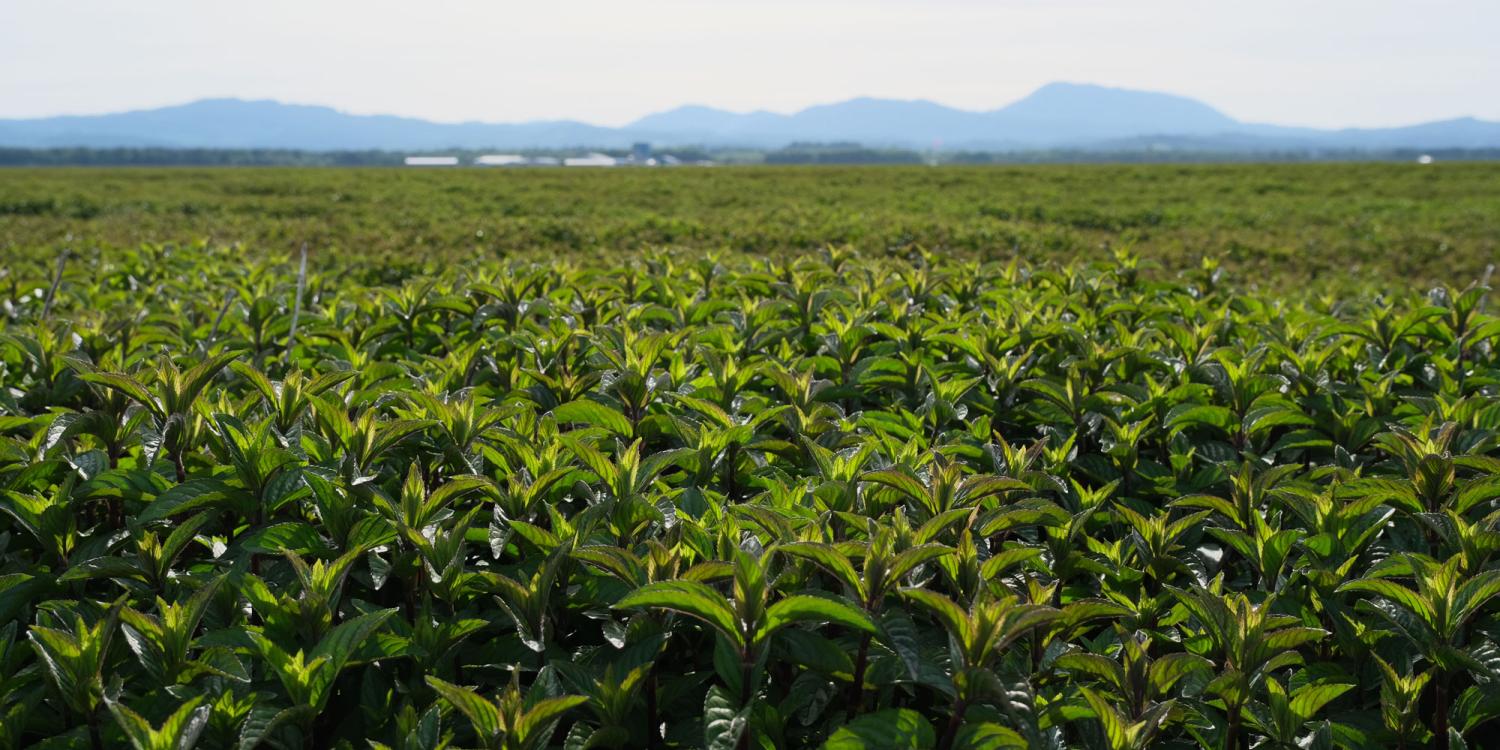
Oregon ranks second in the United States in mint production, with a value estimated worth $28.7 million in 2022. Losses from pests like mint root borer and variegated cutworm can eat into farmers’ profits.
These two most problematic mint pests have traditionally been managed with organophosphate insecticides such as chlorpyrifos. But that pesticide, which has been shown to cause neurological damage in humans, was phased out for use on food crops by the U.S. Environmental Protection Agency at the end of 2022. A newer product – chlorantraniliprole (trade name Vantacor) – is effective at controlling mint root borer and variegated cutworm with fewer negative effects on other organisms. But timing applications to the correct insect development state is critical for optimum control.
To help growers determine the correct time to apply chlorantraniliprole, Oregon State University Extension Service developed the Mint Pest Alert Newsletter, which combines information from weather-based insect development models to estimate when insect populations will be most susceptible to chlorantraniliprole sprays. The models are verified by using insect traps in mint fields.
The newsletter is sent to growers every week during the growing season. It provides predictions of the optimum spray timing as the treatment window approaches, and also includes integrated pest management information. The mint pest alert newsletter serves Oregon mint growers in three growing regions – the Willamette Valley, central Oregon and northeastern Oregon – and uses an aggregation of five regional weather stations to ensure that growers receive recommendations that are tailored to their locations.
As a result, over half of growers surveyed in 2022 now use Vantacor to control mint root borers and variegated cutworms. The newsletter helped growers by including information on better methods of pest control, reducing insecticide sprays, increasing reliance on Vantacor and cutting down on the use of broad-spectrum insecticides.
Recipients have reported that information helped them increase their knowledge of insect development and influenced their choice of insecticide and timing of application. Mint Pest Alert helped save an average of $28.33 per acre, or a value of approximately $453,000 in pest control savings in mint production statewide.